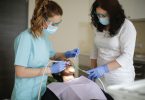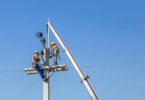The total cost of acquiring a pilot’s license for a light aircraft easily exceeds $ 3,500 to $ 4,000 due to the lengthy educational requirements, but you don’t need to invest that money in one go. If you want a private pilot license or a commercial pilot license, the costs can increase dramatically, and prices also depend on your geographic area and the typical cost of local flight instructors and aircraft charter.
Additionally, the price of flight training is directly related to the number of times you hire a plane or hire an instructor. If you need more time to become proficient in all the maneuvers required, expect to invest more money towards obtaining a pilot’s license.
What is included in the Pilot license bill?
Flying schools typically charge an hourly fee, with a portion of the fee directed toward the hourly rate of rental aircraft and the remainder toward the hourly teaching rate. The grand total is the bill that you pay. Most flying schools expect to pay directly after the flight, but some allow you to pay in advance for a specified period of time at a reduced rate; some flying schools also allow you to set up a payment plan.
- Airplane rental fees vary depending on the flight school you attend, the age of the plane you will be traveling in, and whether it is a wet fare or a dry rate. The wet rate includes the cost of fuel and oil, while the dry rate does not. As of 2018, All American Aviation Services in North Carolina charge wet rates ranging from $ 109 an hour to $ 169.99 an hour, depending on the aircraft. St. Charles Flying Service in Missouri offers a wet rate of $ 114 an hour for its least expensive plane. These prices are roughly equivalent to the course, but check with flying schools in your local area, and plan to pay at least $ 110 an hour for a plane that’s fueled and ready to take off. Total trip time is calculated using either Hobbes’ time or Tach time, which calculates the engine running time; with this approach, you only pay for the time you spend with the engine running and nothing extra.
- Hourly instructor fees vary from flight school to flight school. Instructors at Alliance Flight Training, with multiple locations in Colorado and Oregon, charge $ 45 per hour as of 2018. This number is in the playing field for what you should expect to pay, but again, check flying schools in your local area. For any particular excursion, the total teaching hours may differ from the total flight time taken. Some flight instructors include fees for briefing and debriefing time, which means the flight instruction fee may be 1.5 hours while the flight may only be one hour.
- Supply and testing fees could add up to another $ 1,000 or more. You will need supplies, like an aviation headset, which should cost around $ 100, but may be more expensive if you want the best and latest model. Set aside between $ 100 and $ 200 for books and guides, and exam fees will cost more than $ 500. Schools also charge insurance and medical coverage fees.
What is a pilot’s license?
A pilot’s license is how pilots demonstrate that they are certified to operate an aircraft. It shows that you have completed your training, experience requirements and flight test. With a pilot license, you can legally operate a type of aircraft that has been licensed to fly. You can also use certain pilot licenses to qualify for different jobs as a pilot.
Types of Pilot Licenses
Before you can get an estimate of the cost of obtaining a pilot’s license, you must first determine what type of license you want or need. Here are the most popular types of pilot licenses:
- Student: This is your license to learn how to fly, but you don’t need it to take flying lessons. You need this type of license to be able to fly on your own.
- Private: A private pilot’s license has fewer restrictions than an entertainment or sports license. As long as you complete training, you can fly any aircraft for non-commercial purposes. You can fly at night and carry multiple passengers.
- Sport: With a Sports Pilot License, you can fly in the entertainment world. You are restricted to one passenger and may only fly during the day up to 10,000 feet.
- Recreational: Although this certification is starting to become less popular, some pilots still choose to earn it. It has almost all restrictions like a sports license, but you can lift the restrictions with additional training.
- Commercial: If you want to get a job as a pilot, you need a commercial license. You get paid for transporting people and goods.
- Flight instructor: If you want to teach others how to become a pilot, you need this license. It allows you to train pilots, perform flight reviews and give clearances.
- Air Transport Pilot: If you want to work for a scheduled airline, you need this license. This is the most comprehensive license you can get as a pilot.
- Remote: This license allows you to fly drones for commercial purposes. This license has no formal training requirements, although training can be beneficial.
Student Pilot License Cost
The vast majority of pilots start out as student pilots. Obtaining a student pilot license is the first step towards obtaining a higher degree. Well, for the most part. Recreational pilots may use a sports pilot’s certification to obtain their licenses.
What is the cost of obtaining a student pilot certificate? The Federal Aviation Administration does not charge you anything when applying for certification through the Aviation Standards County Office (FSDO). But if you ask for help from an examiner, representative, or teacher, they can charge a fee to process the application.
How much exactly? The Federal Aviation Administration does not set a fixed amount, but it should be reasonable. However, the cost to you is what you will have to pay for pilot training. The FAA does not specify any training requirements for issuing a student certificate.
SEE ALSO: How do you deal with difficult coworkers?
I still need a medical certificate. So, with that in mind, the cost of acquiring a student pilot’s license ranges from $ 75 to $ 200.
The cost of a sports pilot’s license
The Federal Aviation Administration (FAA) created the Amateur Sports Pilot Certificate in 2004. It allows you to fly Light Sports Aircraft (LSA).
Unlike a student pilot certification, obtaining a Sports Pilot License requires a ground school and a flying school. Ground school comes in two flavors: the teacher lesson or the home study course.
Instructors charge an average of $ 40 an hour for ground instruction. Online courses cost from $ 100 to $ 400, and some are free. The Federal Aviation Administration (FAA) sets the minimum flight time for a Sports Pilot License at 20 hours, which must include at least 15 hours of double instruction and 5 hours of single flight time.
On average, the rental of light sport aircraft is $ 100 and the rate of flight instructor is $ 40. Therefore, flight training costs $ 2,600 at the low end. But 20 hours is the absolute minimum. Realistically speaking, it takes about 30 flying hours for most pilots to become professional, which equates to another $ 1,200.
Add another $ 500 for written and practical tests, plus $ 100 for an online ground school, and the Sports Pilot License will cost about $ 4,400.
The cost of a recreational pilot’s license
According to the latest FAA civilian pilot’s statistics, fewer than 150 recreational pilots are active in the United States.
Why is this small number? It’s easiest to get a sports pilot certification if you want to travel for fun. The majority of pilots also prefer a Private Pilot Certificate, which gives more perks, as less training, time and money are required than recreational training.
The Federal Aviation Administration is still issuing the recreational certification despite waning interest. The cost detail is the same as for a sports license, but with more hours and a slightly higher rate of aircraft rental. You need to log a minimum of 30 flying hours, 15 of which must be with an instructor.
But as you can imagine, most pilots need 10 to 15 more hours than the minimum, which makes the average around 40 hours. The average plane rental price is $ 125, along with $ 40 an hour for a flight instructor, which brings the cost up to $ 5,800 for training.
Now you need another $ 700 for the home study course, medical exam, and test fee. Thus, the cost of a recreational pilot’s license is equivalent to approximately $ 6,500.
The cost of a private pilot’s license
There are several restrictions on a recreational pilot license, but you can lift most of them with tutor endorsement. However, you can never remove some restrictions, such as planes with more than four seats.
A Private Pilot License (PPL) allows you to fly any aircraft for any non-commercial purpose. But it does require more training. The minimum FAA is 35 to 40 hours, depending on whether the flight school is Part 61 or Part 141. However, most pilots require 60 to 75 flying hours.
With that in mind, the cost of a private pilot’s license is around $ 10,000. However, it varies by school, plane, teacher, and location among other factors.
You also need proper flooring instructions, adding anything from several hundred dollars to a few thousand. A pilot training provider like Pilotinstitute.com provides you with lifetime access to a private pilot ground school online.
To get a bite of the cost of a standard floor cycle, keep it in mind. The virtual course features videos, practice questions, and even free teacher endorsement.
The cost of a commercial pilot’s license
Making money while doing what you love is a dream, isn’t it? In aviation, it begins with obtaining a Commercial Pilot License (CPL). Certification allows you to get paid for certain aviation activities, including agricultural applications, pipeline patrols, and traffic reports.
The Part 61 versus Part 141 linkage also goes here, which makes a difference to the minimum flying hours required. Under Part 61, you need at least 250 hours to get your CPL, but a minimum of 190 hours in Part 141 Pilot School. You should consider that training under Part 141 should be less expensive due to the smaller number of hours.
SEE ALSO: Highest paying management jobs
But this is not always the case because the Federal Aviation Administration tightly regulates the 141st part of schools, they tend to have higher rates for aircraft rentals and an hourly coach. Either way, though, you must have a private pilot’s license, which means you’ve built up in an average of 60 hours.
Often times, commercial pilot license courses include multi-engine training and instrument classification. The rationale is that both are essential for most commercial airline operations. So, with both classifications included the cost of a commercial pilot’s license starts at $ 30,000. It could be up to twice that number or more, though, depending on the pilot school.
The cost of a flight instructor license
Becoming a Certified Flight Instructor (CFI) makes the way to gain flying experience. Moreover, it is a popular way to get enough hours for an airline job. However, you do need a commercial pilot license before starting a flight instructor course. But don’t fret.
The cost of a flight instructor certification is only a fraction of what you paid for CPL. The difference between Part 61 and Part 141 is also evident here, which leads to cost fluctuation.
Part 61 schools do not require minimum flight time for the CFI course; they are dependent on pilot proficiency. Conversely, you need at least 25 hours when training under Part 141.
On average, a typical flight instructor training costs $ 5,000. In School Part 141? Well, it comes to $ 8,000. However, the cost of becoming a flight instructor varies depending on the type, location, and reputation of the school.
You can also become a musical instrument or multi-motor trainer. The Certified Flight Instructor (CFII) and Multi-Engine Instructor (MEI) instruments are often two additional classifications to the existing CFI. Typically, the cost ranges from $ 3,000 to $ 5,000 each.






